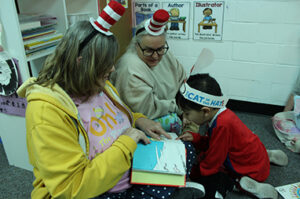By Jara Reeder, Senior Reporter
March 2 marks the birthday of Theodor Seuss Geisel, also known as Dr. Seuss. The National Education Association uses this day to endorse the importance of reading, known as Read Across America day.
Seuss’ works have been around since the 1950s.

He wrote many children’s books, including “If I Ran the Zoo” (1950), “Horton Hears a Who!” (1955), “If I Ran the Circus” (1956), “The Cat in the Hat” (1957), “How the Grinch Stole Christmas!” (1957), and “Green Eggs and Ham” (1960).
Seuss influences individuals of all ages, even those planning to use these stories in the classroom.
“Dr. Seuss remains important today because his books have been read to and by children since they have been published,” said Saydy Graybill, an early childhood education major. “He also includes items that are important to children’s development in reading, such as rhyming words.”
“The Cat in the Hat” uses only 236 words in the entire story. Because of its simplified vocabulary, it can be read by beginning readers.
When Dr. Seuss started writing, there was a need for children’s books that were interesting. Seuss filled that need, and his books continue to inspire and influence children.

“I plan to use his books in my classroom as guides to teach phonics elements for children to know how to read them in text,” Graybill said. “One memory of his works from my childhood is having green eggs and ham in elementary school while we read the book.”
Children can remember Seuss as a fun way to read, and teachers can find ways to make it a fun activity.
“One of the most famous books, ‘Oh, The Places You’ll Go!,’ shows kids that they can go anywhere they want when they grow up,” said Donovan Paden, an education major at Northwestern.
“Whenever I think of Dr. Seuss, I think of his wild, crazy books and the fun times we had in school with them. I will continue to read his books and hope it will impact the next generation.”

